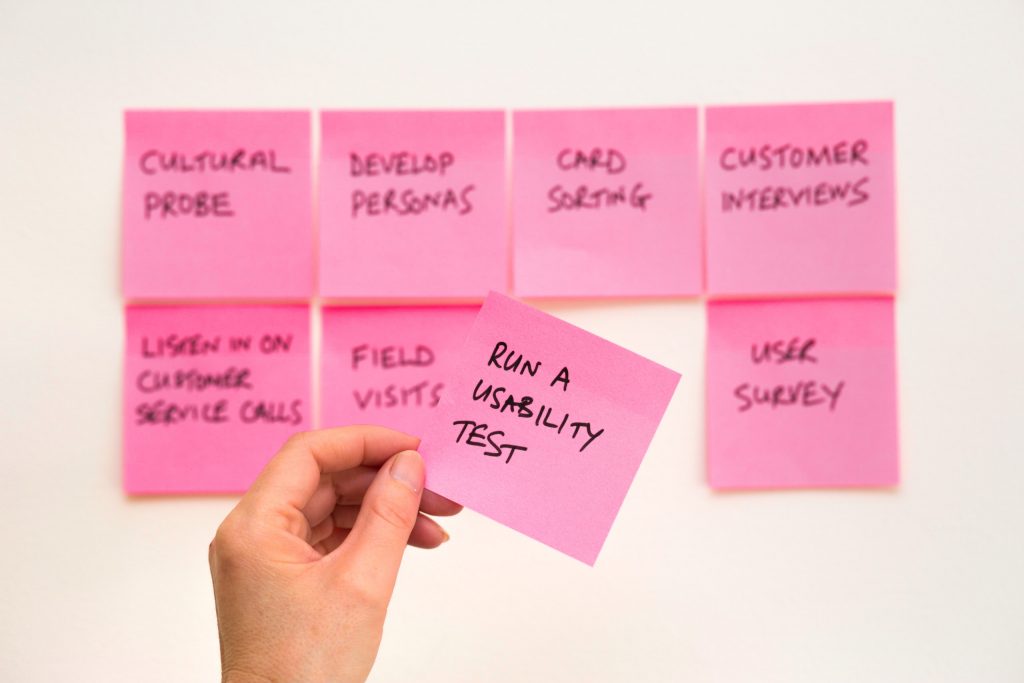Technical project management
Establish a competitive project delivery methodology including Agile, Lean, Scrum or Six Sigma, control your work streams, and manage supply chain and stakeholders.
Technical project management
Communication strategy and plan
Establish a communication plan with your stakeholders to get their buy-in and keep them informed.
Plan-on-a-Page and Gantt charts
Create robust yet straightforward tracking tools to provide visibility and assurance.
Technical project management office
Provide core PMO capabilities for managing risks, issues, assumptions and dependencies.
Project management tools
Deploy digital project and programme management tools to improve your business, enable automation and create business intelligence reporting opportunities.
Project management
Use online PM tools to centralise project information and enable a better and outcome-driven approach.
Content management systems
Use software automation to manage website content so that you can focus on your audience and clients.
Enterprise resource planning
Centralise information about projects, stakeholders, resources, services, supply chain, financials and manufacturing KPIs to make informed decisions.
Customer resource management
Improve conversion rates by centralising customer information and go-to-market materials and swiftly addressing commercial opportunities.
Document management systems
Improve information accessibility and internal knowledge base by deploying data repositories and knowledge hubs.
Technical project management
Improve your organisation by creating project profiles to determine what tools you should use to maximise the chances of delivering on time and within budget.
User insights
Gain user experience and customer insights by setting up strategic online questionnaires and feedback forms on specific website pages.
Change projects
Improve the performance of a project or a service by introducing new strategic objectives, principles, and KPIs and changing its core operating model.
Transitional projects
The transition between platforms, frameworks and content management systems without changing the user functionalities and enabling features
Mergers & acquisitions
Integrating functionalities from two or more programmes or projects, programmes or solutions, under a unified global business operation
Technology crossovers
The transition from one technology to another, i.e. from Microsoft to Mac OS X server or Linux server, or from Linux network solutions to Cisco network solutions

Managing technical projects
Project sustainability
Increase project sustainability by proactively designing efficient maintenance procedures with low resource demands.
Requirements gathering
Please ensure projects are well-scoped by working with stakeholders and creating detailed requirements matrices,
management of risks and issues
Control programme risks by using powerful interactive dashboards and RAID logs and liaising regularly with stakeholders.
Invest in profitable initiatives
Correlate business cases with annual budgets, benefits realisation and risk reports to ensure the best value for money.
Improve change management
You can use early notices, trends and change papers to inform your stakeholders about potential business transformation cases.
Choose adequate methodologies
PRINCE2, Dynamic System Development, XP, Future Driven Development, Agile, Scrum, Six Sigma and Waterfall.
Intuitive technical project management
Our technical project management service offering aims to assist businesses in navigating project complexities efficiently and precisely. We employ advanced tools and techniques to deliver tailored solutions that align with our clients’ CXOs’ unique requirements. Here’s an overview of our approach and how we handle various project types.

Modern technologies
We use cutting-edge tools to provide top-tier technical project management services. These include project management software like Microsoft Project and JIRA, collaboration platforms like Slack and Microsoft Teams, and cloud-based document management systems like SharePoint. These tools empower us to plan, monitor, and track project progress in real time, ensuring transparency and accountability throughout the project lifecycle.
Systematic approach
Our approach to technical project management is highly adaptable, considering each CXO’s specific needs. Whether it’s the Chief Technology Officer (CTO), Chief Information Officer (CIO), or Chief Executive Officer (CEO), we customise our strategies and reporting mechanisms to align with their objectives and priorities. For example, a CTO may focus more on technology stack selection and integration, while a CEO may be more concerned with overall project ROI.
Integration tools
One of our core strengths lies in our ability to integrate multiple work streams and projects seamlessly. We break down complex projects into smaller, manageable tasks and allocate dedicated teams to each one. Our project managers collaborate to ensure different work streams are synchronised, and they promptly identify and resolve dependencies. This holistic approach minimises bottlenecks and expedites project delivery.
Examples of technical project management initiatives
We devise a comprehensive plan for a data integration project outlining data source identification, data cleansing, transformation, and loading processes. We use tools like Informatica or Talend to automate data workflows, ensuring consistency and accuracy.
In a migration project, such as transitioning to a new cloud platform, we formulate a strategy encompassing risk assessment, data migration plans, and rollback procedures. Tools like AWS Data Migration Service or Azure Migrate are employed to facilitate a smooth transition.
When managing a product delivery project, we focus on product development timelines, quality assurance, and release planning. Agile methodologies and tools like JIRA frequently oversee product development sprints and ensure rapid, iterative progress.
For product design projects, we collaborate closely with design teams to ensure that design concepts are translated into practical, implementable solutions. Prototyping tools like Adobe XD or Sketch are used to visualise design concepts.
When dealing with service integration projects, we utilise workflow automation tools like Zapier or Microsoft Power Automate to connect disparate systems and streamline processes. Our focus is on enhancing operational efficiency and user experience.
We adhere to Agile or Scrum methodologies to deliver iterative updates and enhancements to in-app development projects. Version control systems like Git and project management tools such as Trello or Asana aid us in efficiently managing the development process.
Technical project management deliverables and work products
Critical path
The critical path forms the backbone of our project management process. We identify the essential tasks and milestones for the project to remain on schedule. We ensure the project progresses efficiently by concentrating our resources and efforts on these critical elements. Regular monitoring and adjusting the critical path enable us to adapt to changing circumstances and maintain project momentum.
Project artefacts
Creating comprehensive project delivery artefacts constitutes a crucial aspect of our service. We generate Microsoft Project plans outlining the project's timeline, milestones, and resource allocation. These plans serve as a roadmap for the project team, aiding them in staying on track and meeting deadlines. Additionally, we produce documentation, including reports, risk assessments and change logs.
Other tools
In addition to project management and collaboration tools, we leverage various software tools to enhance our technical project management services. These include data analytics and visualisation tools like Tableau and Power BI for data integration projects, version control systems like Git for app development, and workflow automation platforms like Zapier to streamline processes in service integration projects.